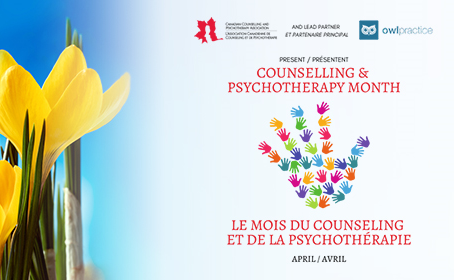One of the most widely talked about therapy modalities these days is Eye Movement Desensitization and Reprocessing (EMDR) therapy, with thousands of therapists across the world learning and practicing its techniques. According to the EMDR International Association (EMDRIA), EMDR helps therapy clients across a wide range of mental health conditions, with its origins in treating PTSD and other trauma-related challenges.
When you bring EMDR into your therapy practice, you’re not only providing your clients with another way of coping with emotional distress, but also strengthening your practice’s service offerings – which might lead to an increase in your session fees. To do this, however, it’s important to engage in EMDRIA-approved EMDR training and get an EMDR certification.
What is EMDR certification?
EMDR certification is a standardized credential that proves capability of therapists using EMDR in their practice with clients. Despite EMDR’s popularity for therapists – and therapy seekers – not just any mental health clinician can ethically use it in their practice. To become EMDR certified means that you have passed a high threshold of criteria with extensive training, demonstrating that you are qualified to bring EMDR into your client work.
What does it mean to be EMDR certified?
EMDR certification is a process led by EMDRIA, the not-for-profit credentialing association for this type of therapy. When a therapist becomes EMDR certified, they’ve applied to EMDRIA proving they’ve met the qualifying criteria. It means they’ve not only engaged in EMDRIA-approved training but have also completed the consultation hours and client session requirements, with their materials reviewed and approved by EMDRIA.
How is an EMDR certification different from EMDR training?
EMDR certification and EMDR training are two different things, however EMDR certification requires therapists to go through EMDR training. When a therapist is EMDR certified, it means that they’ve completed extensive EMDR training. Any therapist can engage in EMDR training, however that doesn’t give them the credential of being EMDR certified.
EMDRIA, as the professional body for EMDR therapists, oversees the standards when it comes to EMDR training. They go through each training program’s syllabus or curriculum and deem them either comprehensive or falling short. There are dozens of training organizations and for-profit companies that offer therapists the opportunity to learn how to use EMDR therapy, though not all of them are EMDRIA-approved.

Is it worth it to get trained in EMDR?
For many therapists, it’s incredibly worth it to get trained in EMDR – or to get EMDR certified. First and foremost, EMDR is an evidence-based therapy that has helped countless individuals overcome the challenges of trauma, so it’s a genuinely helpful approach for clients to meet their mental health goals.
Many therapists want to build their therapy toolkit so they can adjust their approaches for their individual clients. Going through EMDR training is another tool to place in this toolkit and can be a great way to support clients to reduce the impact of their trauma symptoms. Going through EMDR training means that you’ll have more ways to contribute to your clients’ progress.
In addition, offering EMDR therapy at your practice is a valid reason to increase session fees, as it’s a specialized type of therapy that not every therapist offers. Offering EMDR therapy can also increase your marketability – and earn more for your practice.
How long does it take to learn EMDR?
The concepts of EMDR therapy aren’t particularly challenging to learn, however it’s important to do EMDR well because of the client subject matter, which is traumatic memories or distressing emotions. There are many options out there for therapists to learn EMDR rather quickly, such as from webinars or online videos. However, to get comprehensive training in EMDR – and to practice it ethically – it takes hours of training over several weeks or months.
For example, the EMDR Institute Inc., founded by the creator of EMDR, Dr. Francine Shapiro, offers its EMDR basic training through 10 hours of live training plus 10 hours of case consultation. It also takes time to complete the required reading before and after the live training sessions, not to mention the client sessions required to implement EMDR techniques to talk about during case consultations, adding up to over 50 hours of training to complete the program.
What are the requirements for EMDR training?
EMDR training programs generally require attendees to be licensed mental health professionals to enroll. This includes social workers, counselors, marriage and family therapists, nurse practitioners, psychiatrists, psychologists, and more. Some EMDR training programs also grant attendance to pre-licensed professionals, however there’s a requirement that they must be practicing under a licensed supervisor.
There are also courses designed for graduate students who have yet to graduate or achieve professional credentials. These courses are not typically offered to first year students, as they also require supervision by a credentialed supervisor and field placement.

How to become EMDR certified
EMDRIA believes having high standards when granting EMDR certification means they’ll back highly professional, competent mental health clinicians who maintain EMDR’s efficacy. That’s why there are multiple requirements for EMDR certification applications. This includes providing the following:
- A Certificate of Completion of an EMDRIA-approved training program.
- A copy of an active professional license.
- A notarized Statement of Practice detailing EMDR experience. This attestation should confirm that you’ve been in practice for more than two years and that you’ve conducted more than 50 EMDR sessions with at least 25 different clients.
- Documentation confirming the completion of 20 hours of case consultation with an EMDRIA-approved EMDR Consultant, including the exact number of consultation hours engaged. These consultation hours must have been from the preceding five years and must have been at least 10 hours of individual consultation – the remaining 10 hours can be in a small group format. These consultation hours must be completed after finishing EMDR training.
- A Letter of Recommendation from an EMDR Consultant.
- Two Letters of Recommendation regarding your professional practice from colleagues or peers. These letters must highlight your use of ethics in your practice, professional character, and use of EMDR in your sessions with clients.
- Certificates of Completion from at least 12 hours of EMDRIA continuing education credits through EMDRIA-approved courses.
- Attestation that you agree to the EMDRIA Policies Agreement.
Going through EMDR training or becoming EMDR certified is no small task, however its benefits flow into your practice and to your clients. Becoming EMDR certified is a huge accomplishment – so don’t forget to celebrate your efforts!
Reduce clinical administrative tasks and transform more lives with Owl Practice. Owl Practice provides all the tools you need to make your practice successful. Join the thousands of care professionals using Owl to run their practice every day.






